Sunday, 20th Today is warm at 32°C and one can really feel the changeover of the seasons. We go out at 4pm and quietly go up the Sabie H4-1 road. Something is always on the go along this road.
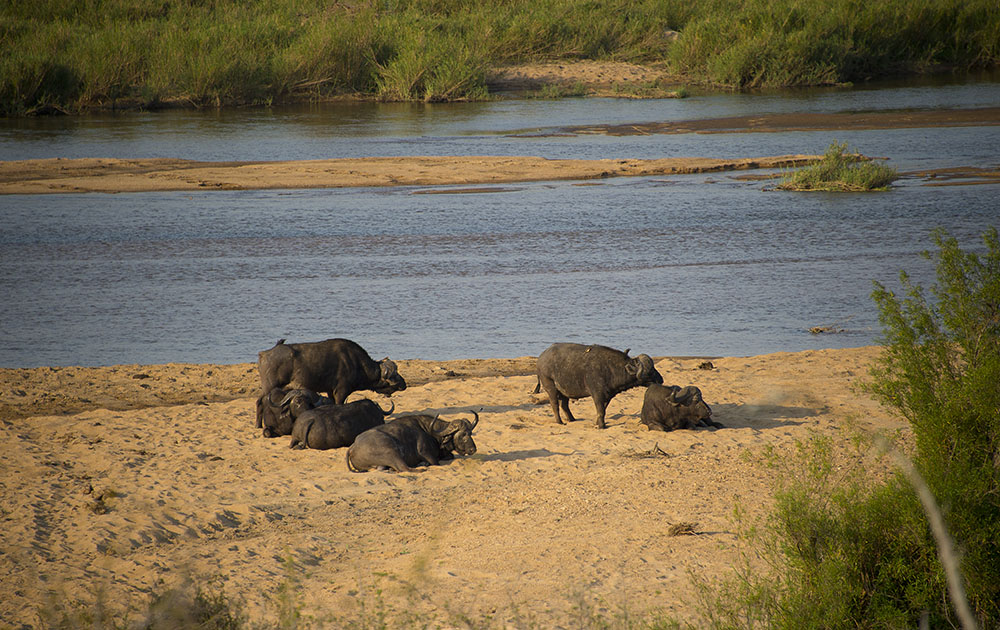
Monday, 21st It is cloudy this morning with a light south wind. We are heading for the loop road S122 around Muntshe today and travel rapidly up the H10. 1Km beyond the S29 Mlondozi turnoff we come across the corpse of a young buffalo at the side of the road. Other than some damage to its stomach skin, nothing has touched it and strangely, no lions are evident anywhere.
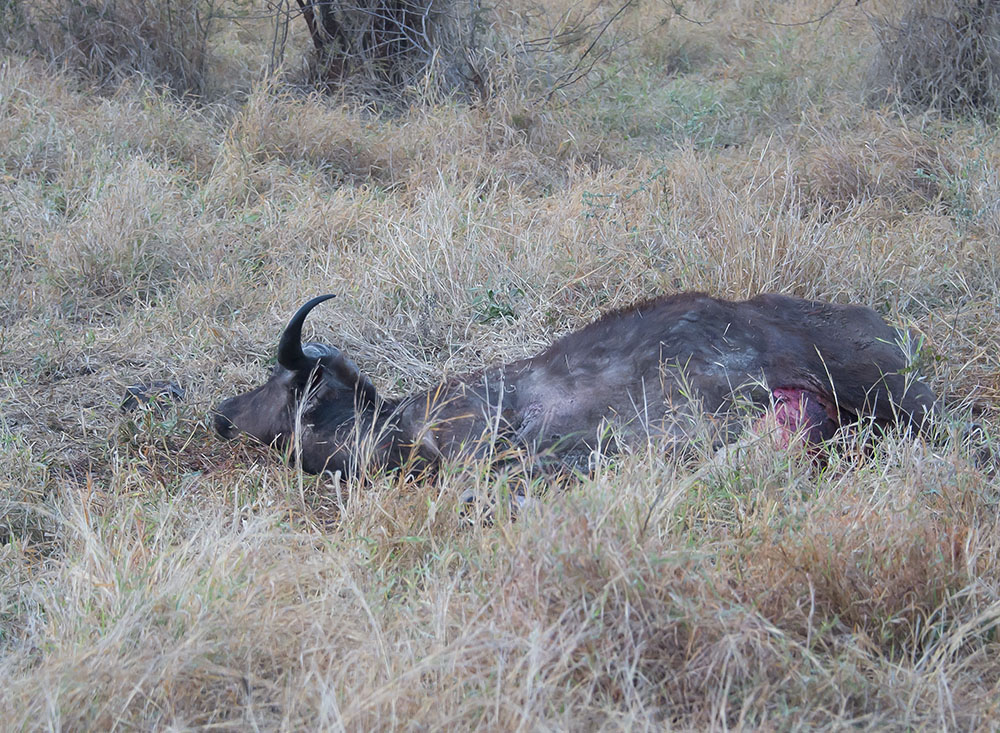
We decide to push on to the S122. With no sun today the road lacks its special morning beauty and even the birds are scarce. At the end of the road at the S29 junction we come across two lionesses in the grass.
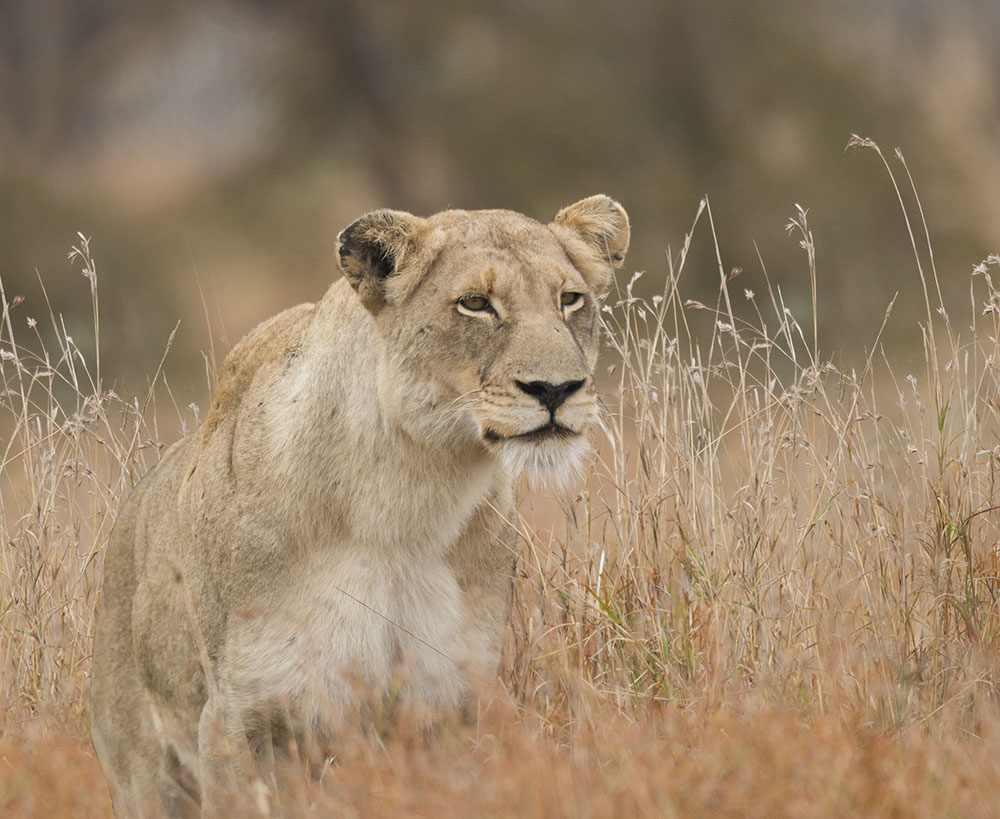
Curious as to what has become of the buffalo carcass, we loop back onto the main H10 road and find only a rather gorged Tawny Eagle feeding.
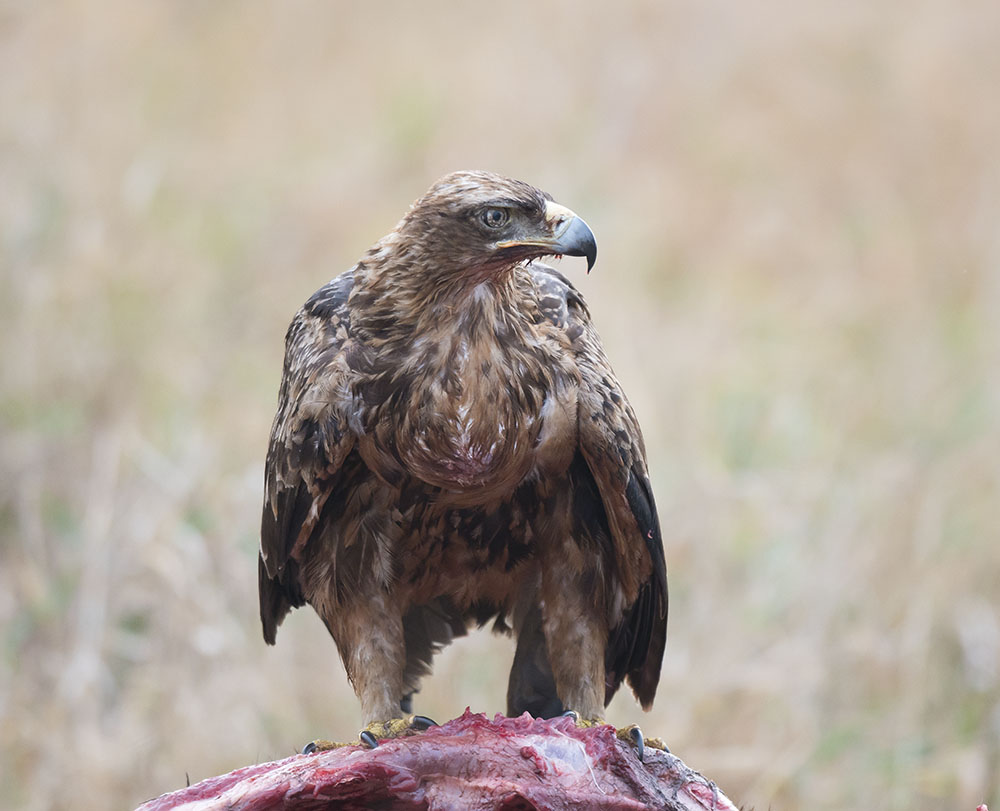
However, the stomach cavity has been ripped open by now and cars on the scene tell us this is the work of hyenas. Rather puzzling is that no lions have visited what was obviously their kill.
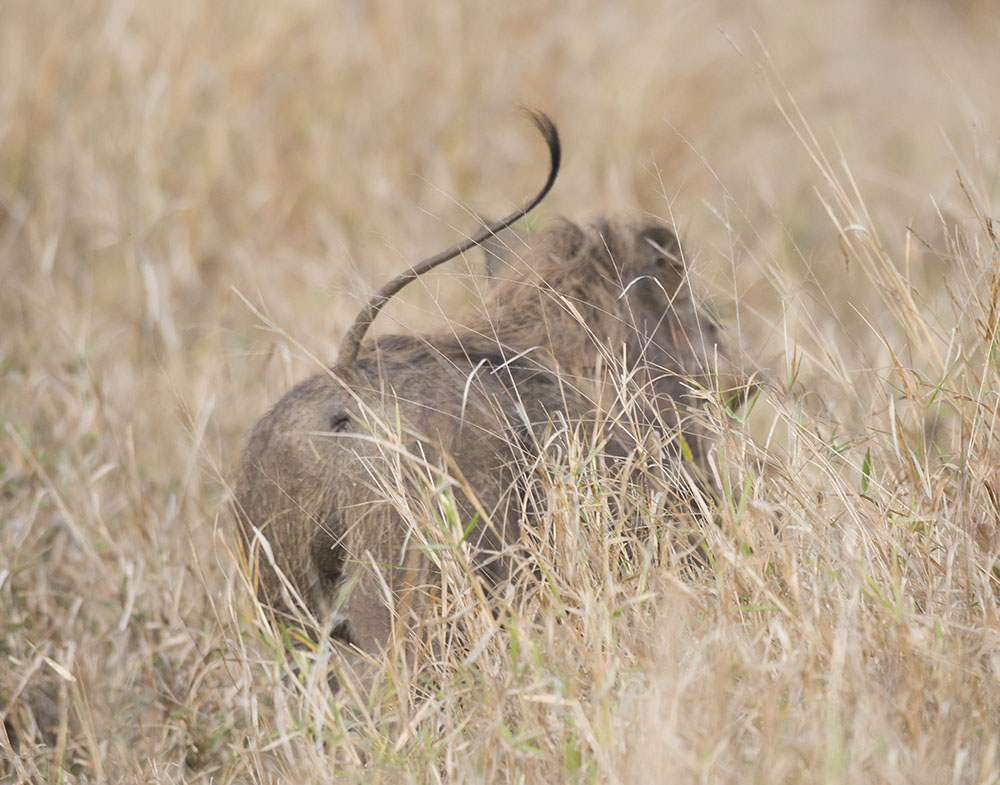
As we return to camp, the sun begins to break through and with the light still good, I leave Renette in camp and go looking for birds along the nearby S82 road.
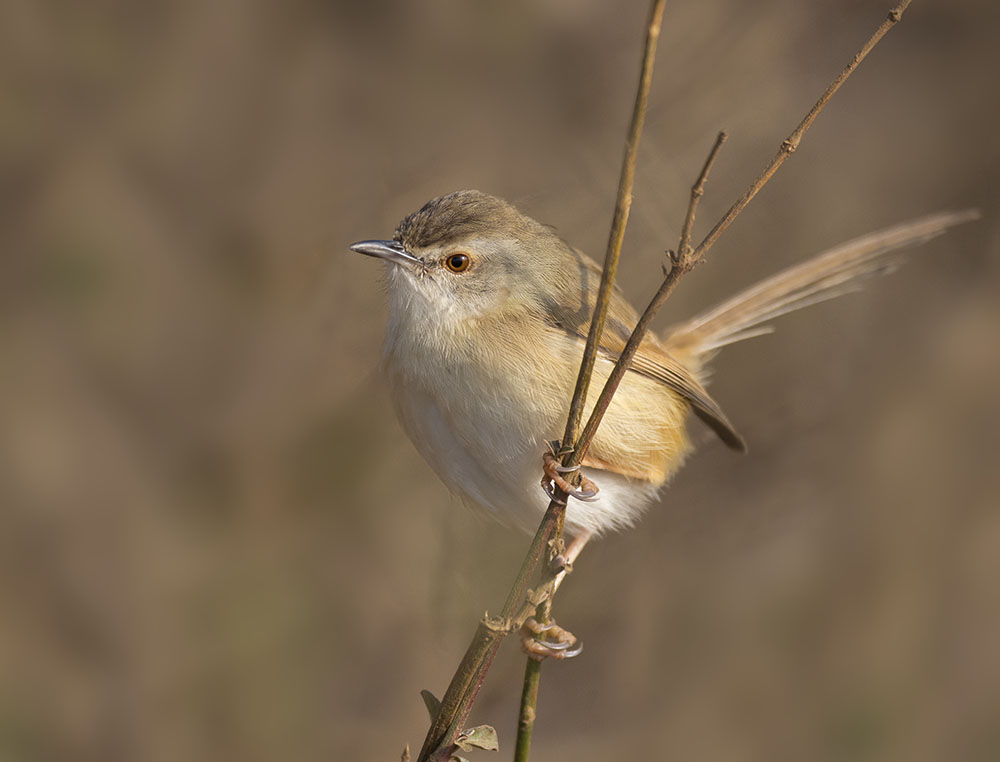
At the Mativuhlungu Stream I turn and head back to camp.
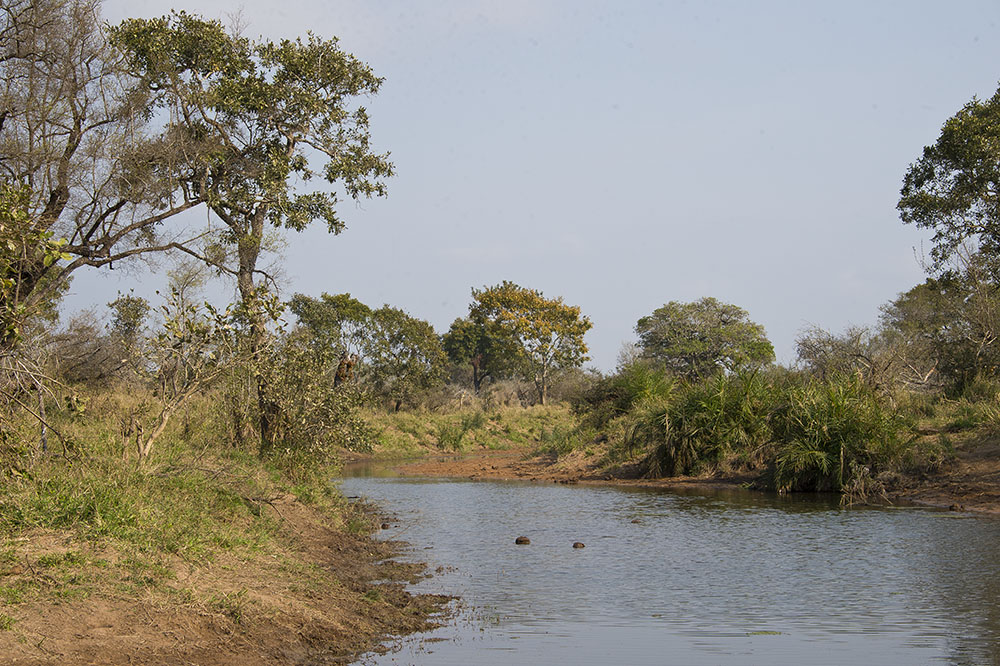
At 3.30pm and with the temperature again at 32°C, we decide to return to our buffalo kill up the H10. We find the vultures have at last discovered the carcass and are quickly dismantling it. In the evening light, it is a most interesting to just sit and watch, something that we do for an hour. All tthe vulture species are present – 4 Lappet-faced, 1 Cape, 1 White-headed, 3 Hooded and the rest White-backed. A strict hierarchy prevails with the Lappet-faces ruling over the rest whilst the smaller Hooded Vultures keep to the fringes.
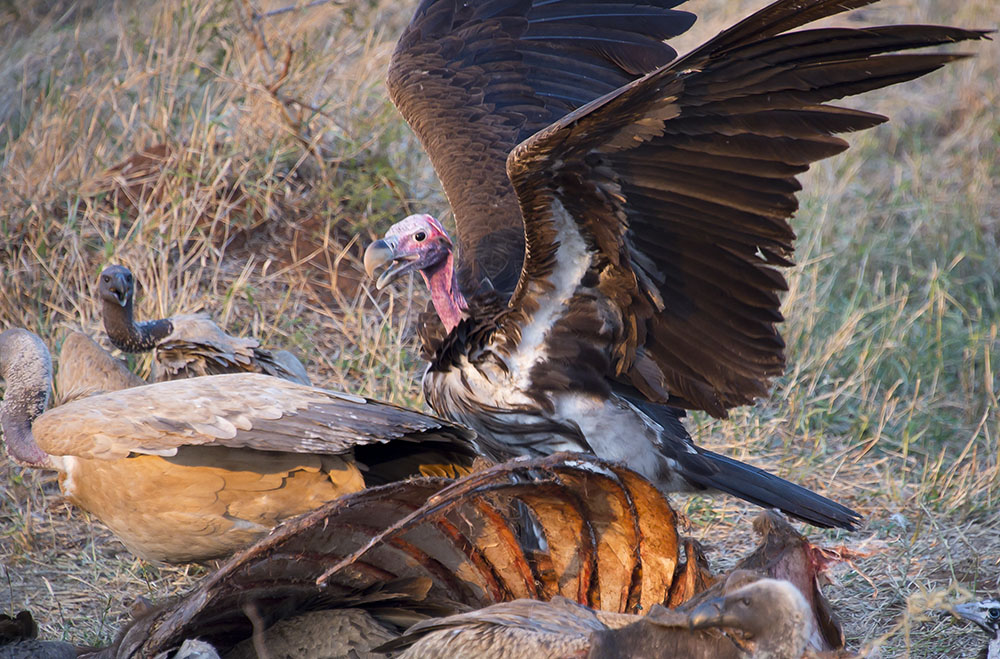
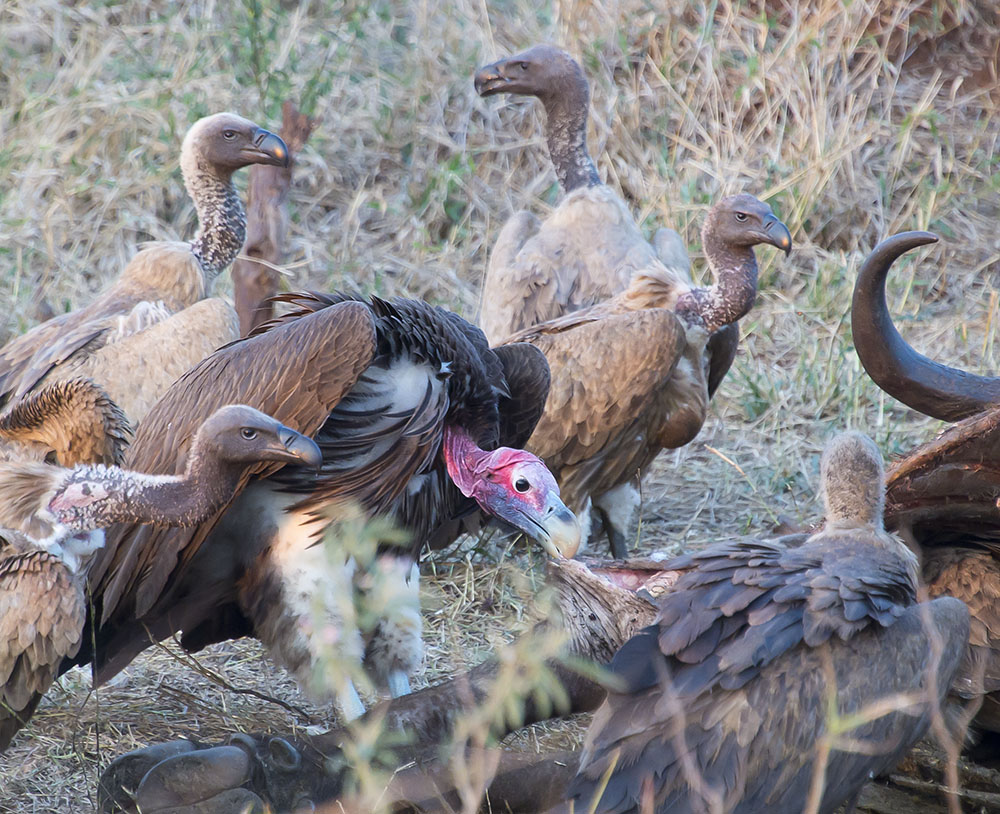
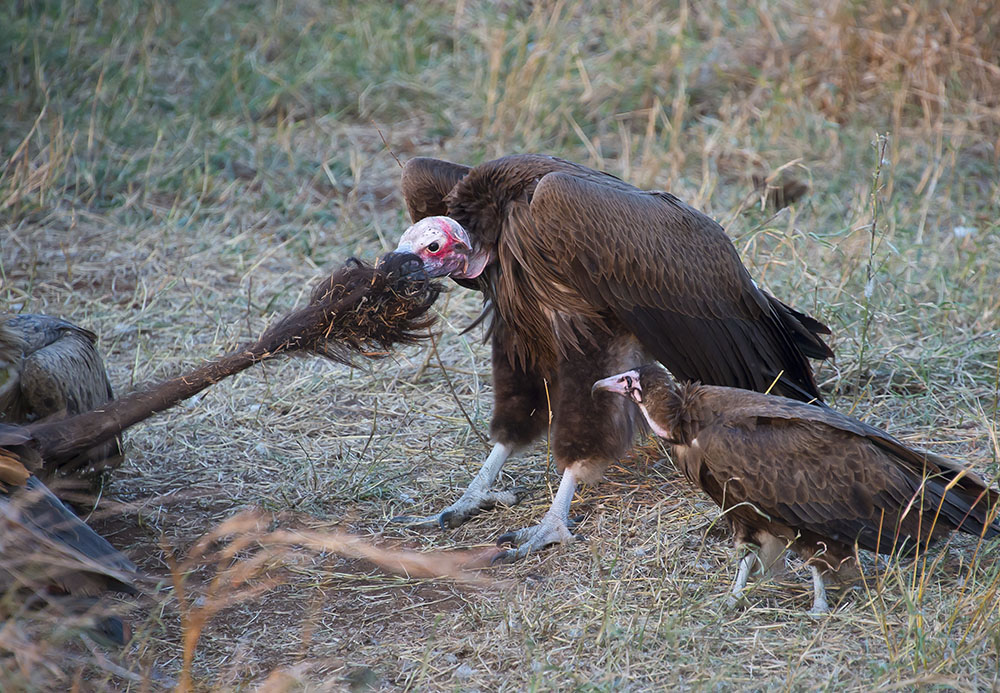
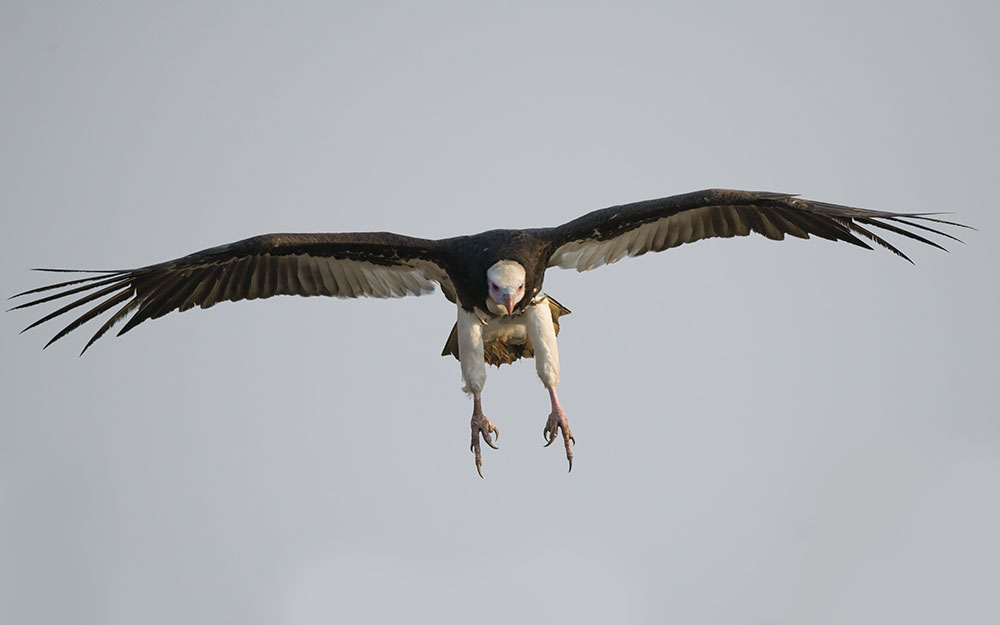
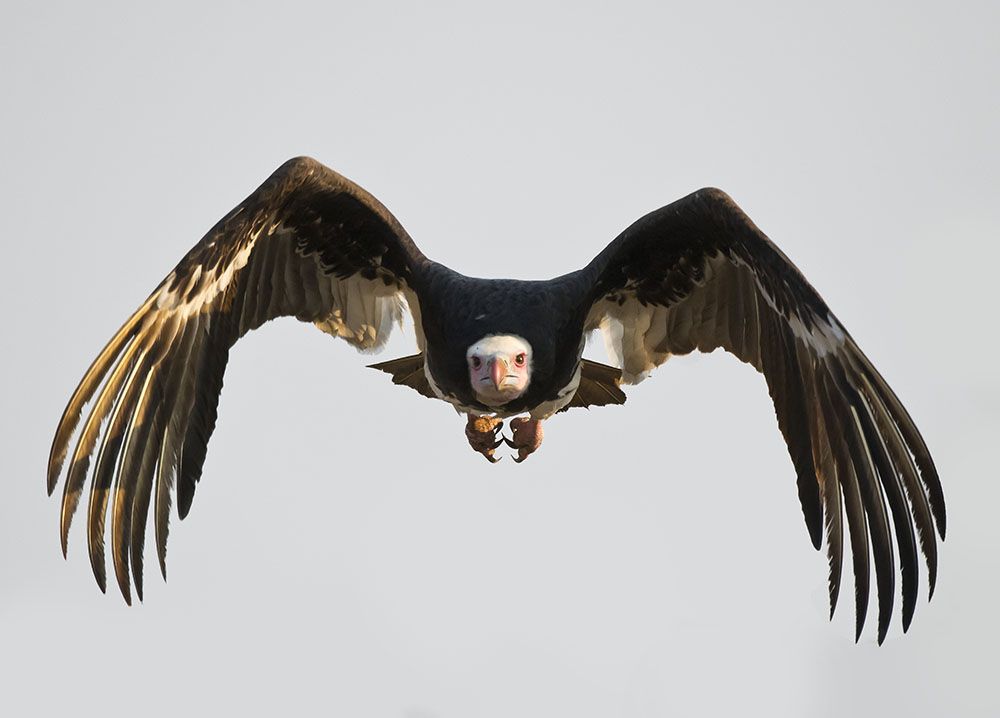
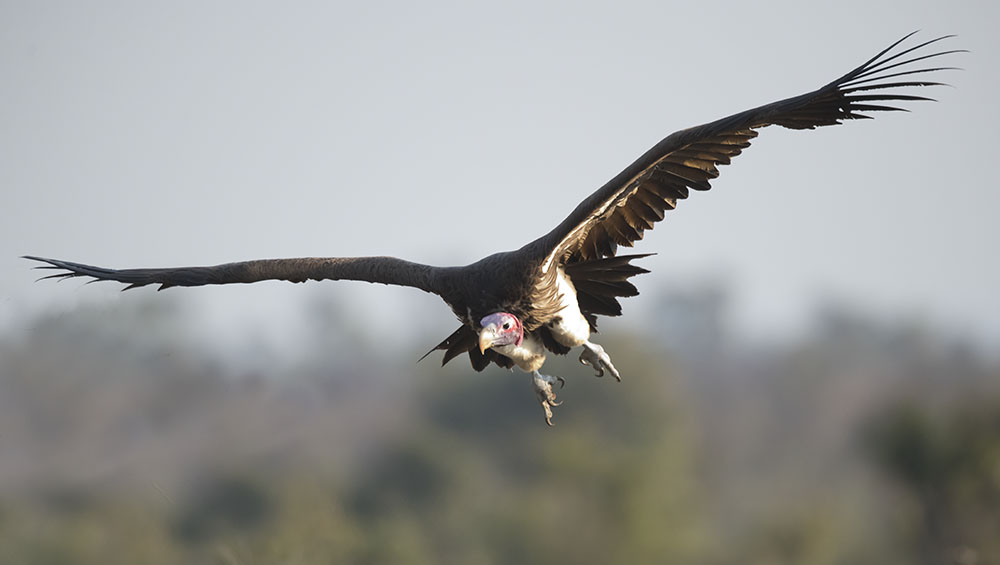
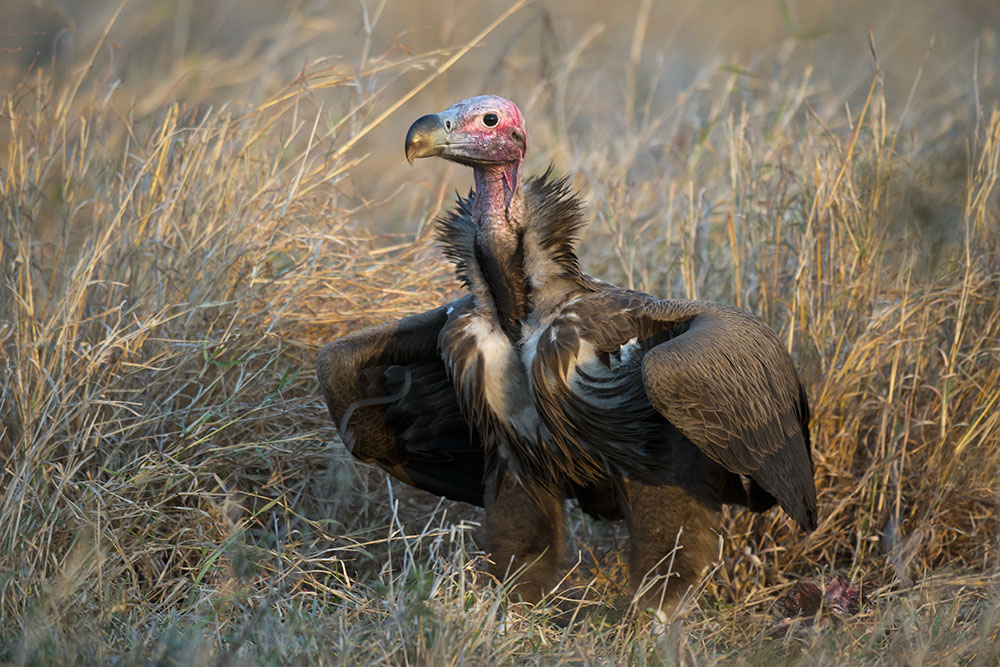
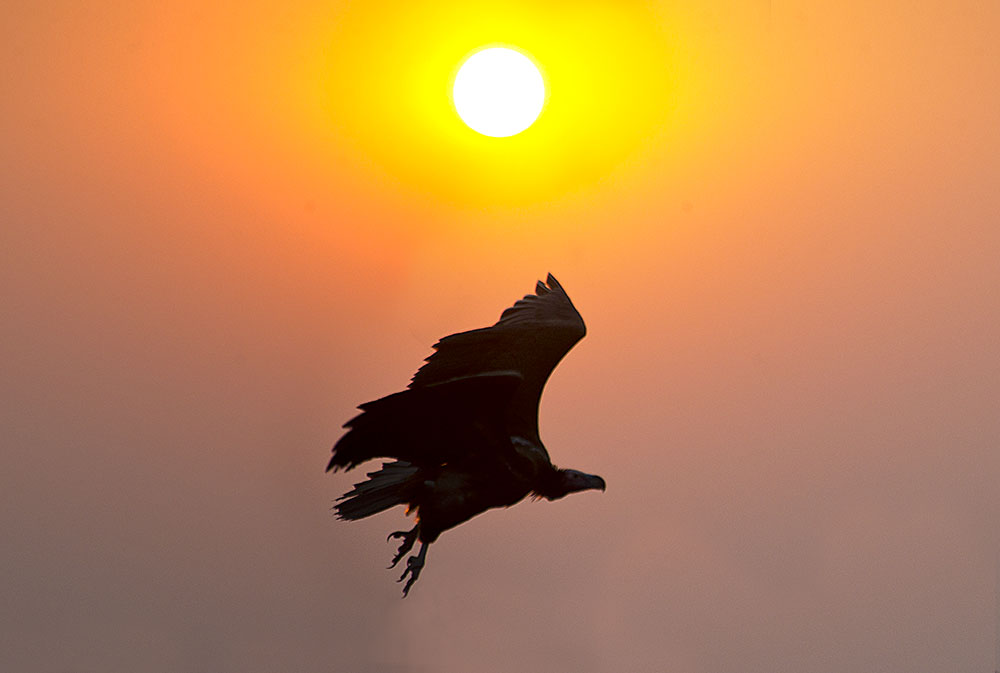
With the sun setting we set off to camp marvelling at how Kruger always manages to throw up the unexpected. Which of course is its appeal. Our time is rapidly running out here and yet after 36 days we are just as eager to go out each day in search of new experiences. And Kruger seldom fails to deliver. We both muse over this in camp and agree that the feeling of peace with nature and the general contentment amongst staff and visitor make Kruger a most desirable place to be. We have been very privileged to enjoy it.
Tuesday, 22nd Today is our last day in Kruger and our five weeks have flown by. We must get to Skukuza to fill up with fuel and do tyre pressures. So, at 6am we again travelup the H10 Tshokwane road on our way to the Salitje S30. But first we check up on how our buffalo kill is making out. A collection of Kruger’s cleaning staff – Lappet-faced, White-headed, White-backed, Jackals and Hyenas have seen to it that in 24 hours a fair sized buffalo has been reduced to a set of horns, a skull and part of a vertebra.
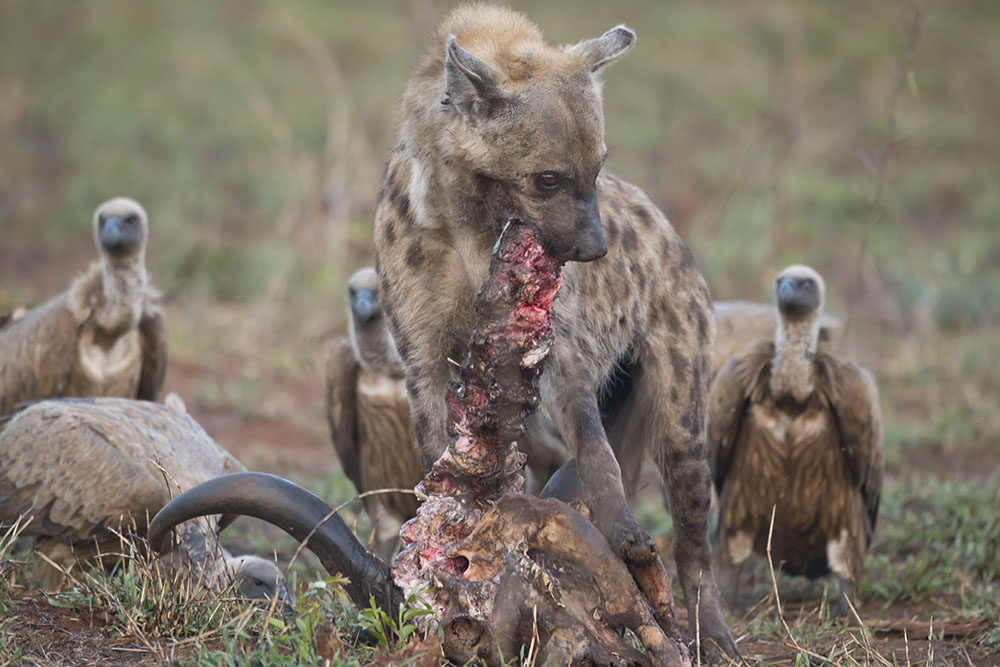
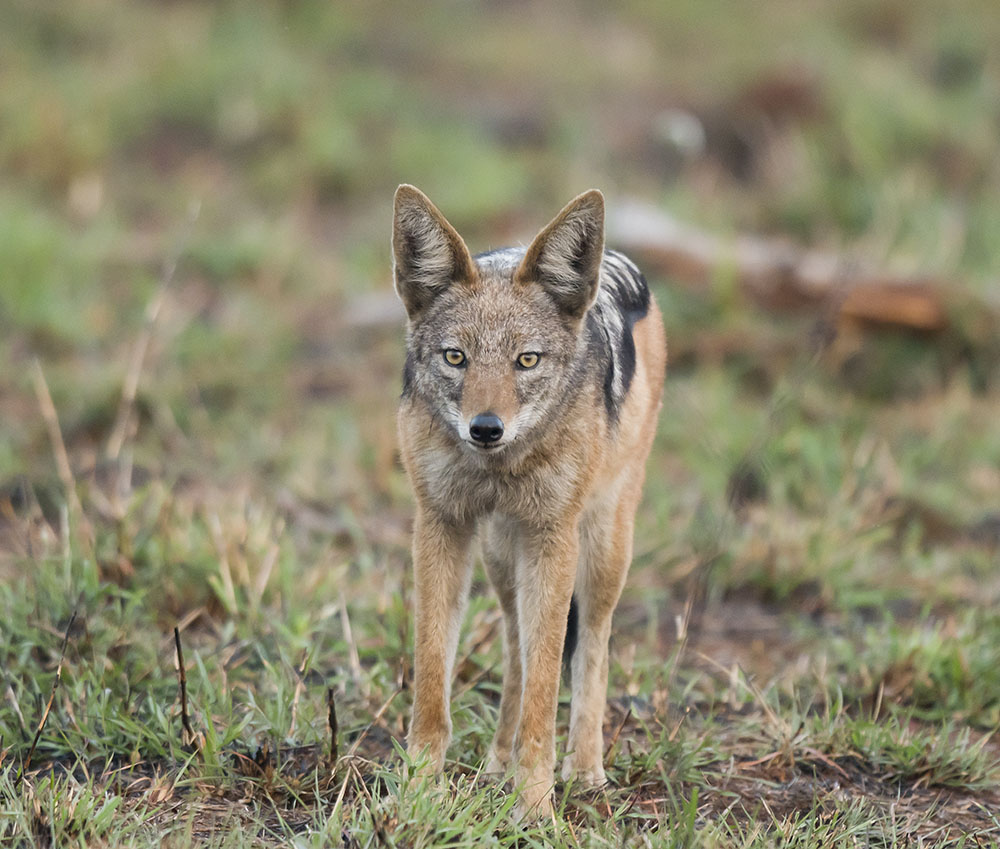
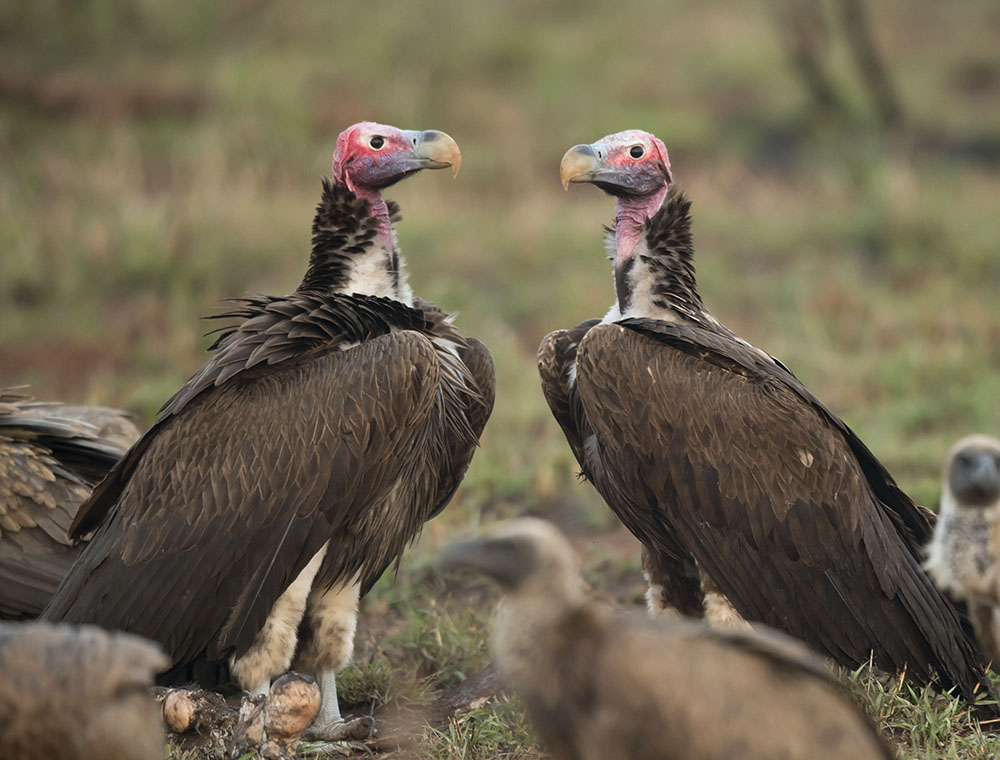
We next take the S29 road across to the S30 Salitje. Where the two roads meet we come across this lovely lioness so beautiful in the morning sun.
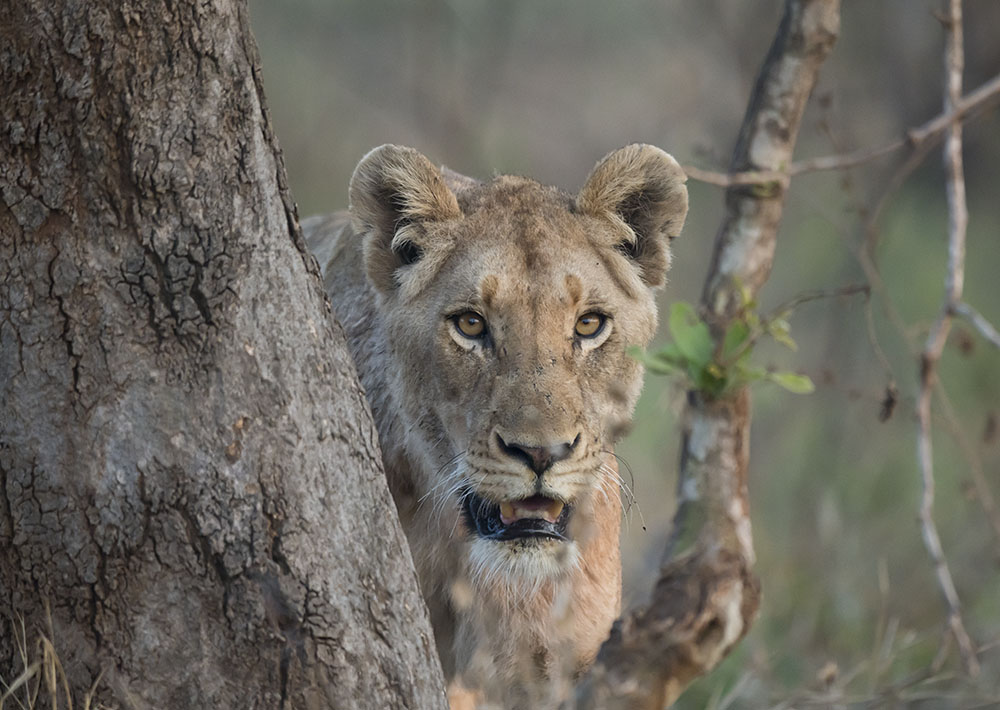
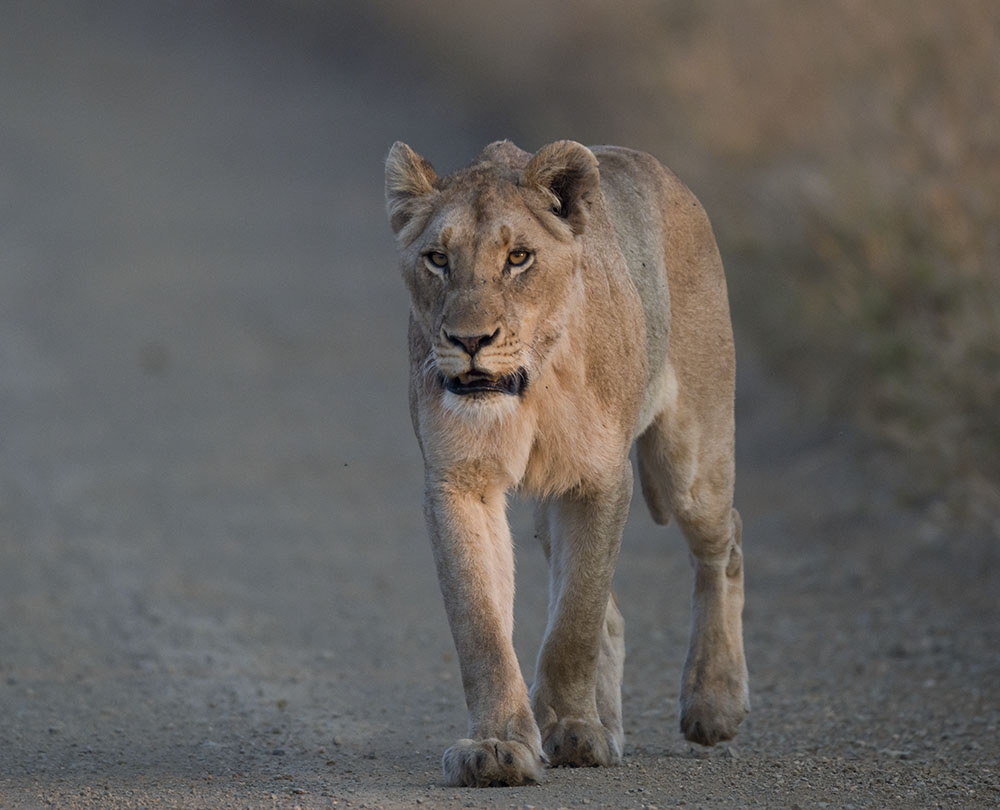
Salitje is always at its best on these golden early mornings.
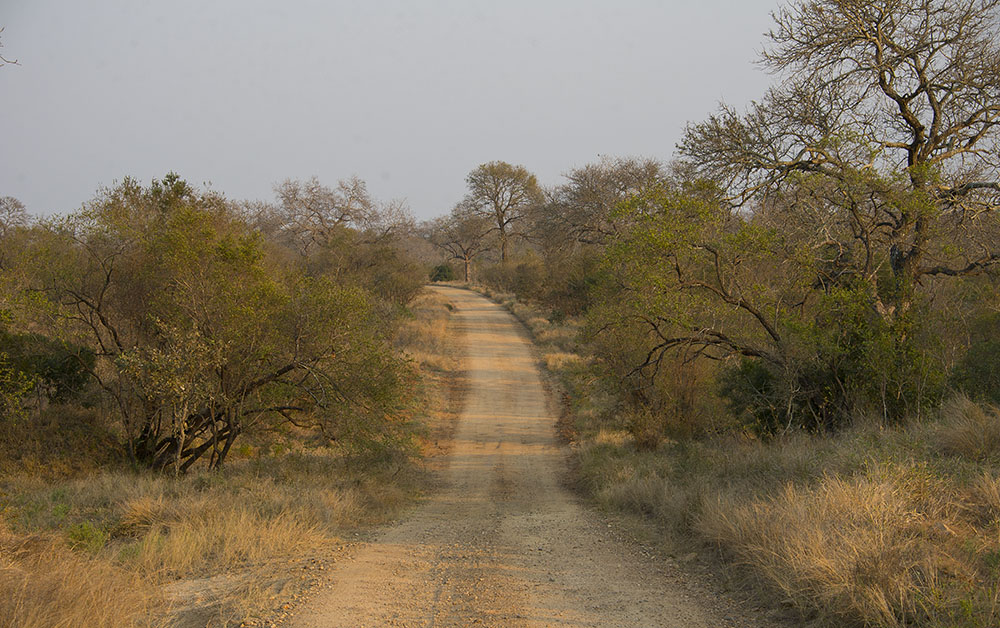
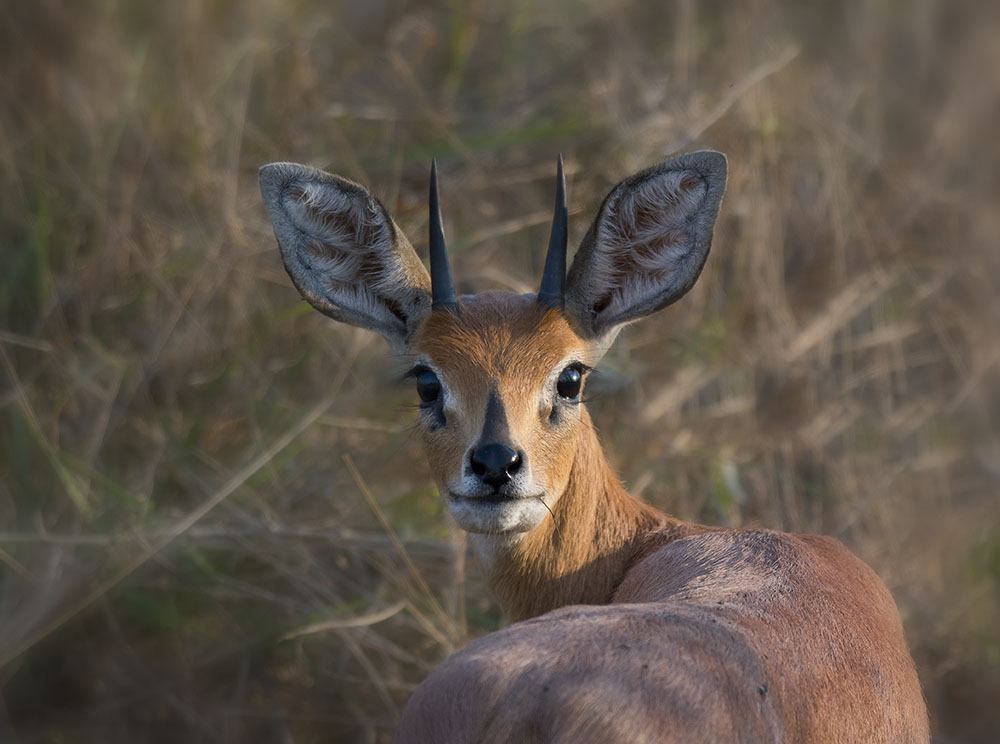
But we see nothing exceptional until we reach the high-level bridge over the Sabie. Here we find the African Harrier- Hawk (Gymnogene) which is often hanging about the bridge.
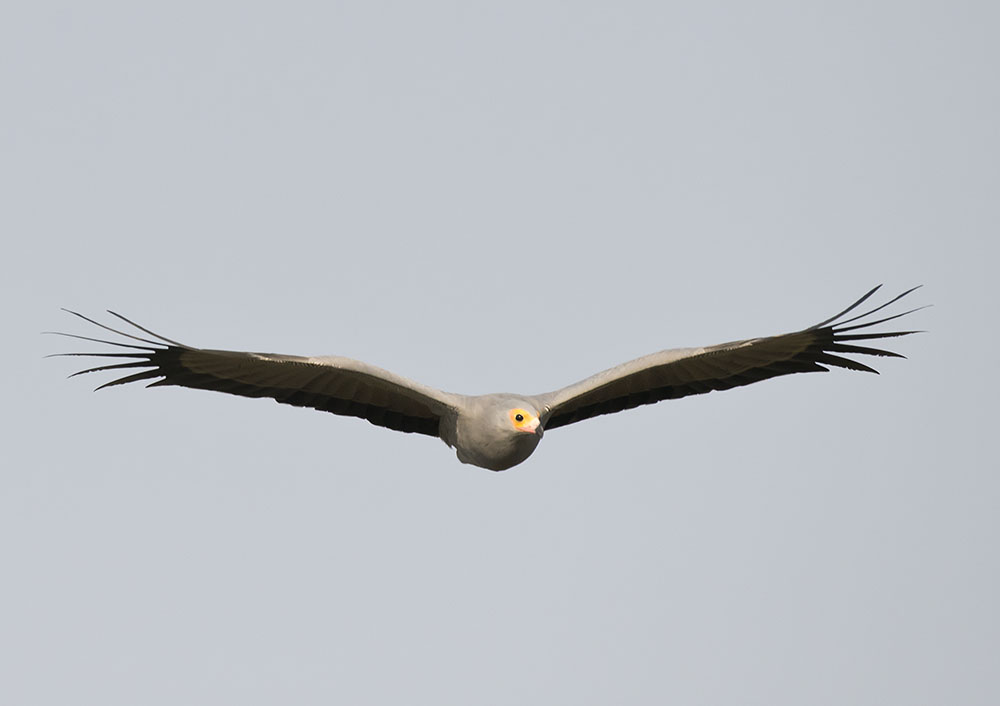
The African Finfoot has been a bit of a bogey bird for me and I have never photographed it well. I am always scanning the waters of the Sabie hoping to find one. Today we do see one from the bridge but unfortunately it is too far distant.
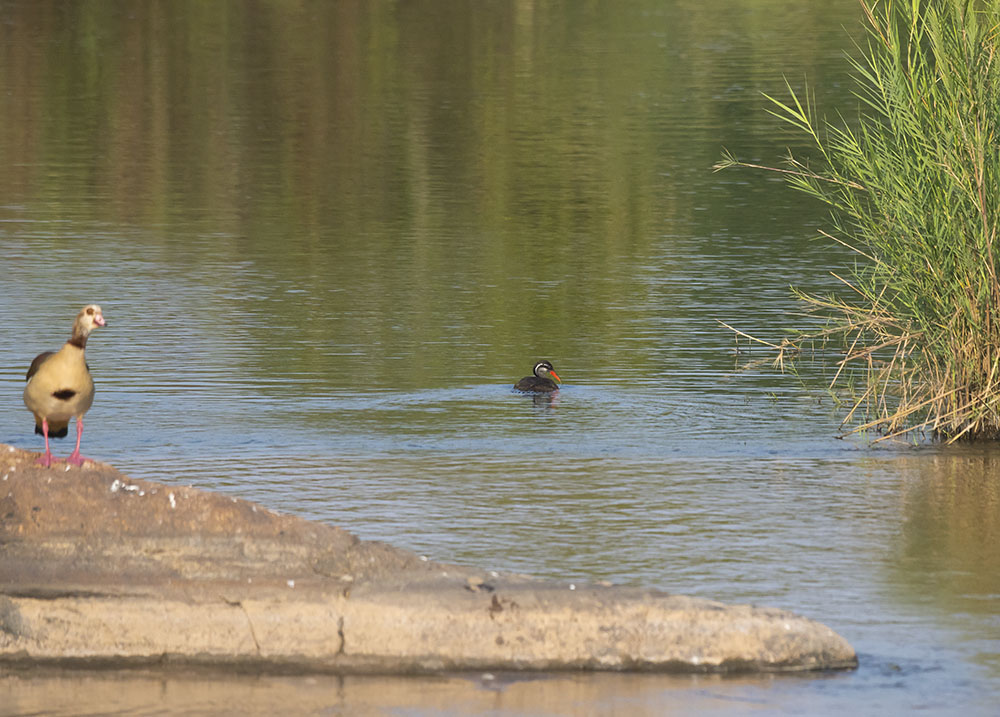
Nearing Skukuza yet another kill has been made almost on the camp fence and is well attended by hyenas, vultures and tourists.
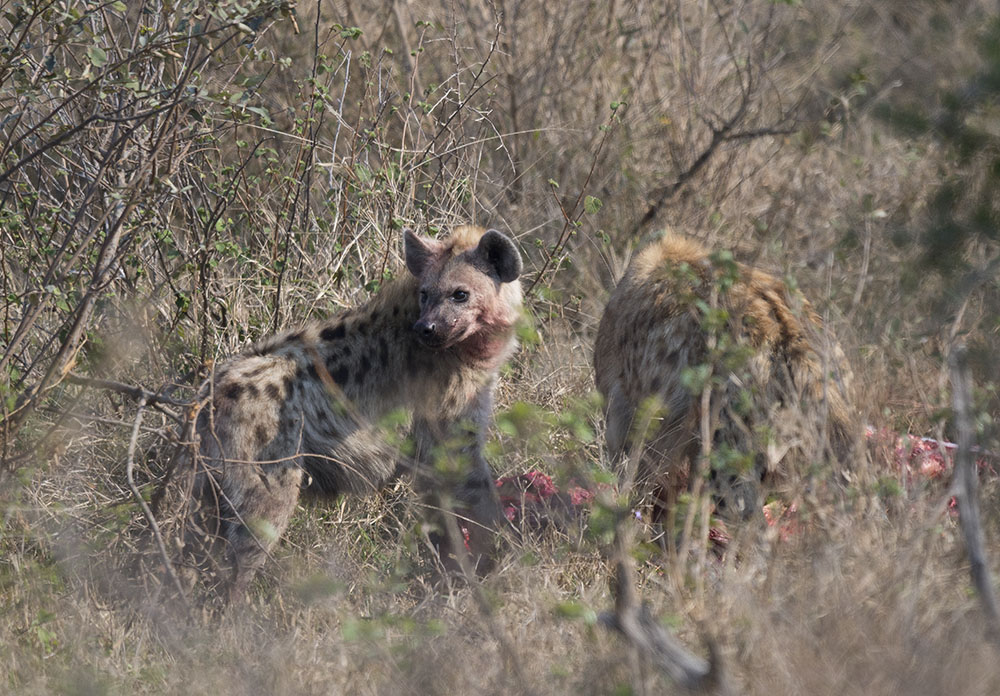
We go down to the Cattle Baron restaurant for some breakfast on the deck above the Sabie river.

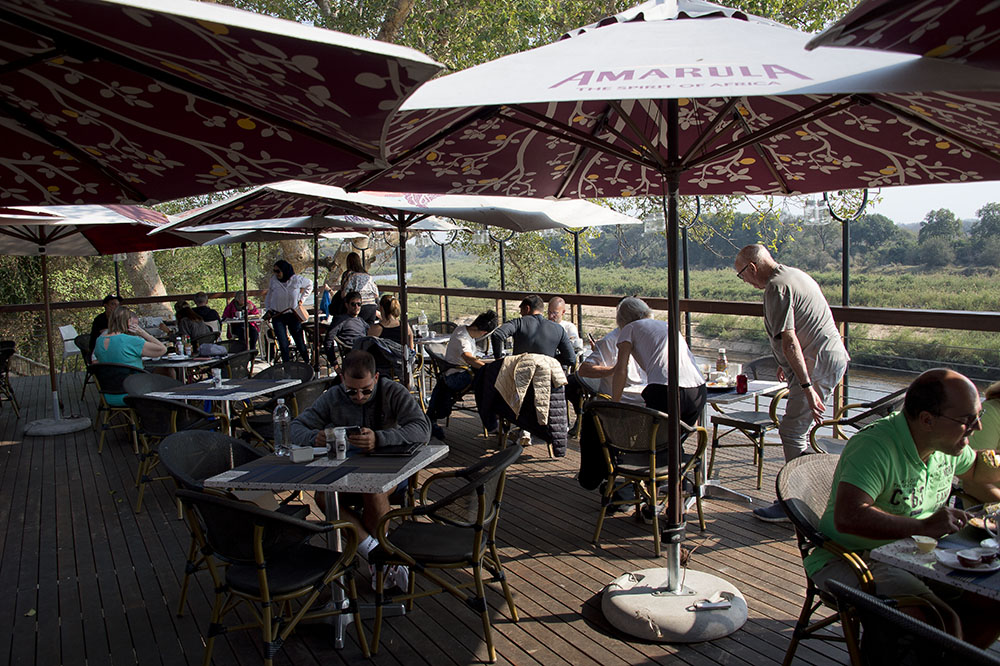
Then to the petrol station next to the Reception and admin buildings.
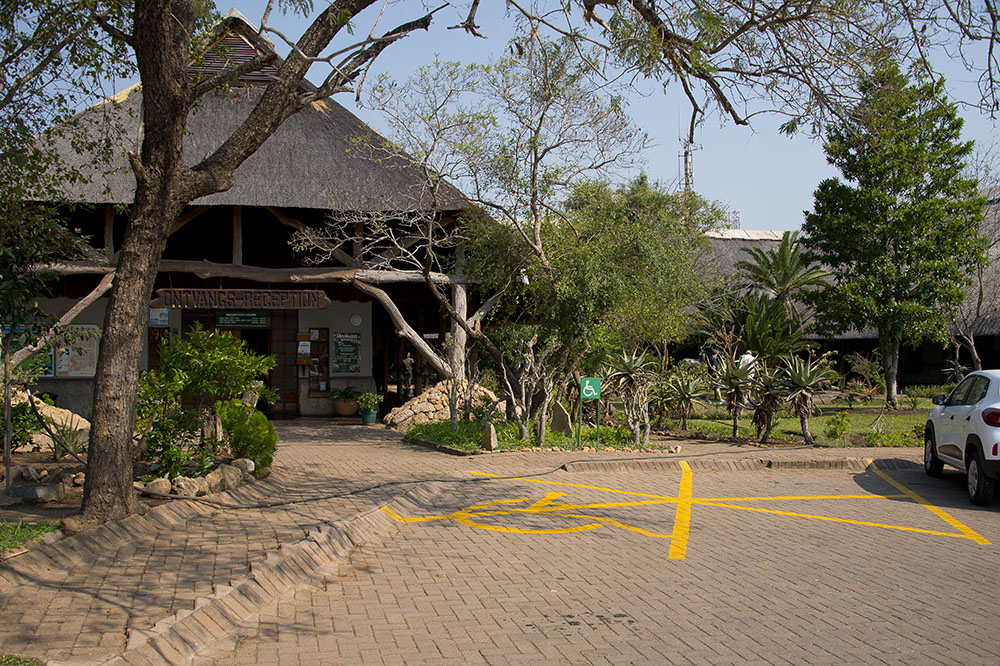
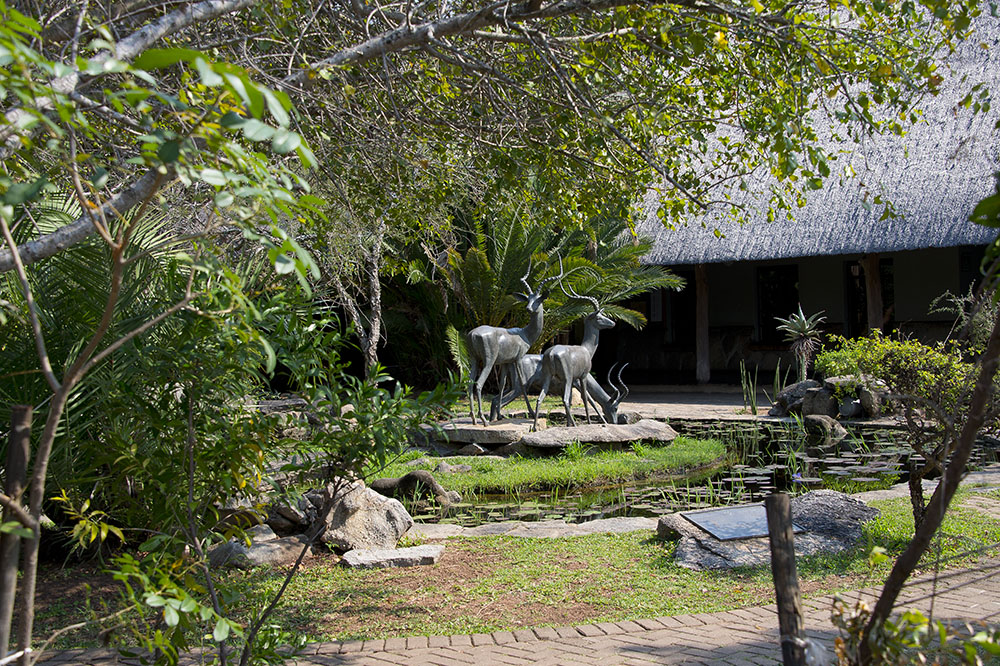
We leave Skukuza for our return trip to Lower Sabie but first go down to the low level bridge near camp. Nothing doing we set out down the H4-1. The light is now too harsh, the road is choked with traffic and the prospects for seeing something special seem remote. But I make one of my biggest mistakes yet in Kruger.
Some 8Km’s down the road we come across an agitated group of Impala and following the direction of their gazes, I see a leopard dragging a limp Impala some 30m from the road and heading straight for us. I quickly reverse a suitable distance to allow for my long lens to photograph the leopard as it crosses the road and then to my horror find that I have forgotten to set up my camera mount mechanism at my window. I just do not have time to set up before the leopard with Impala shoots across the road and down the bank to the riverbed. I am quite beside myself with missing such an opportunity lost through shear negligence. I vow that I will never make that mistake again.
Somewhat rattled and muttering, we continue down the road. 2Km before Nkuhlu we come to a huge pile-up of cars all jostling to view another leopard sprawled along a low branch of a tree down next to the river. But the behaviour of the tourists is so atrocious that the leopard bolts down the tree and disappears. I do not even come close to getting a photograph.
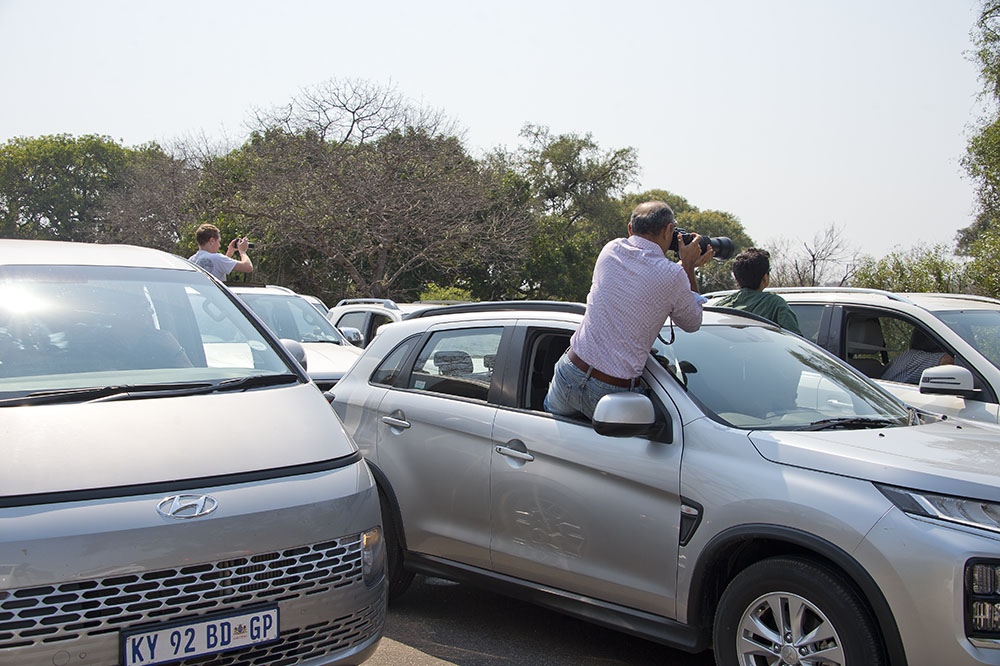
The H4-1 road congestion really is terrible towards midday and sightings like this are just mayhem. And yet amongst all this we were lucky enough to see our own leopard cross the road all by ourselves.
Another group of cars at the Lubyelubye Rocks are watching a lion stretched out on the rocks.
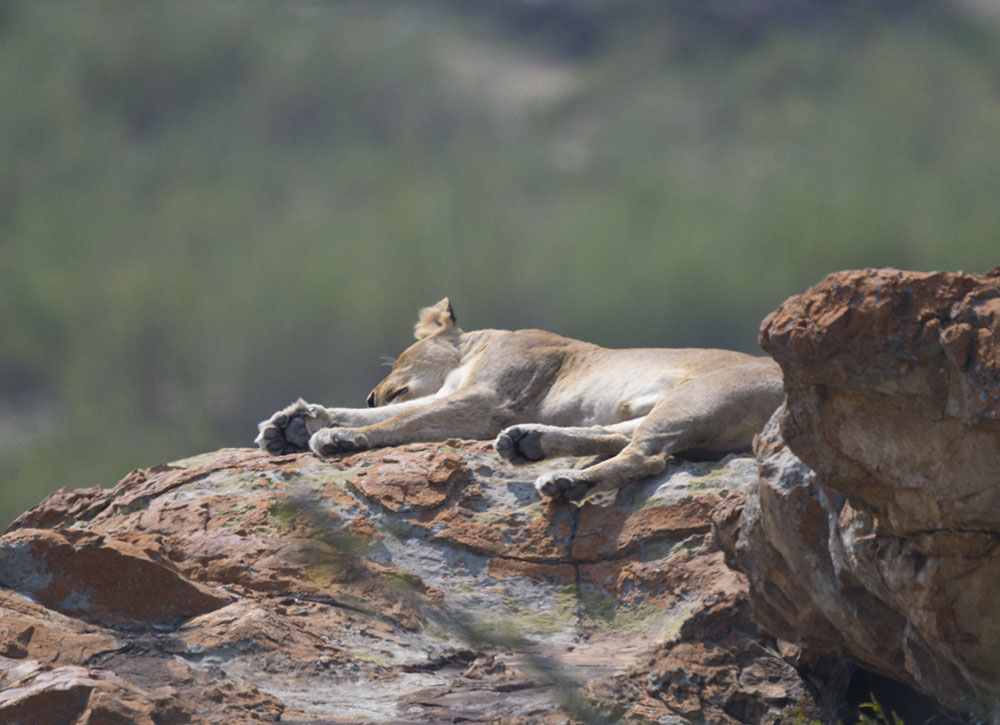
The internet coms at Lower Sabie continue to be a problem and you may have noticed that I am posting my blog sometimes in the early hours of the morning. There seems to be a gap now so I will send off what I have written now and then follow through with a final post from Jo’burg.

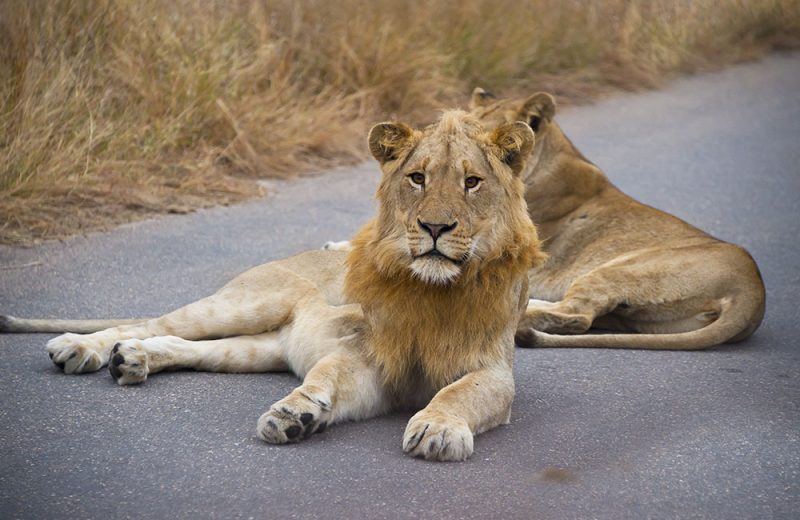
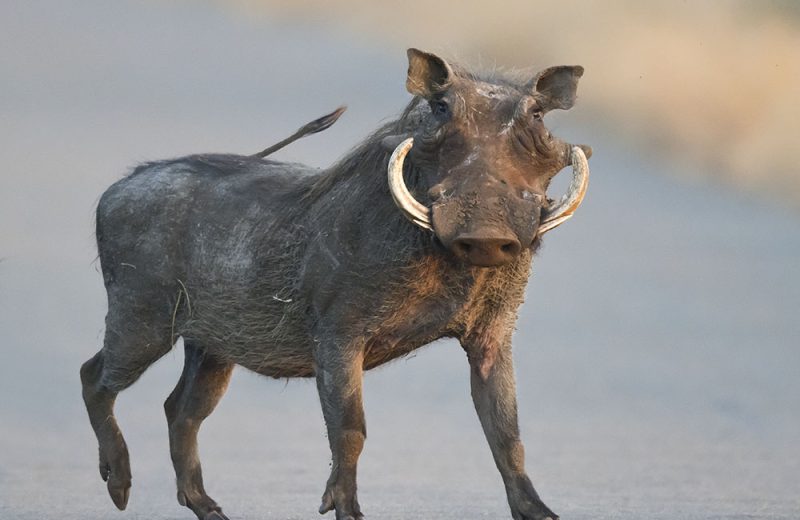
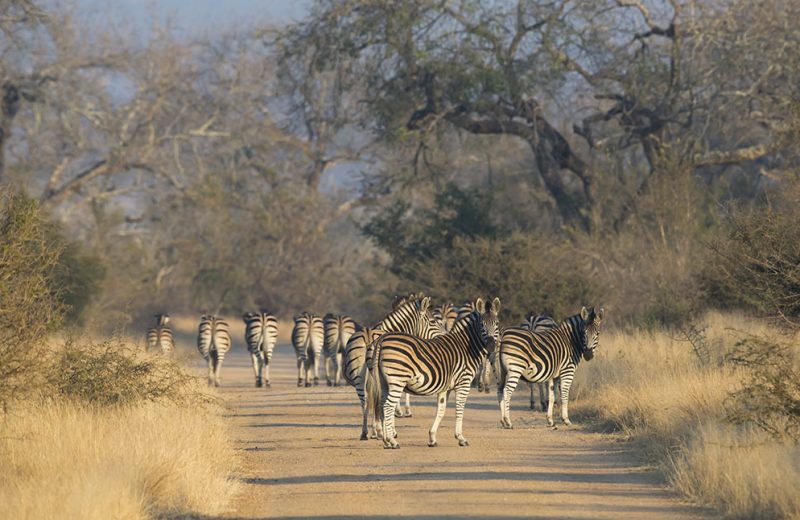

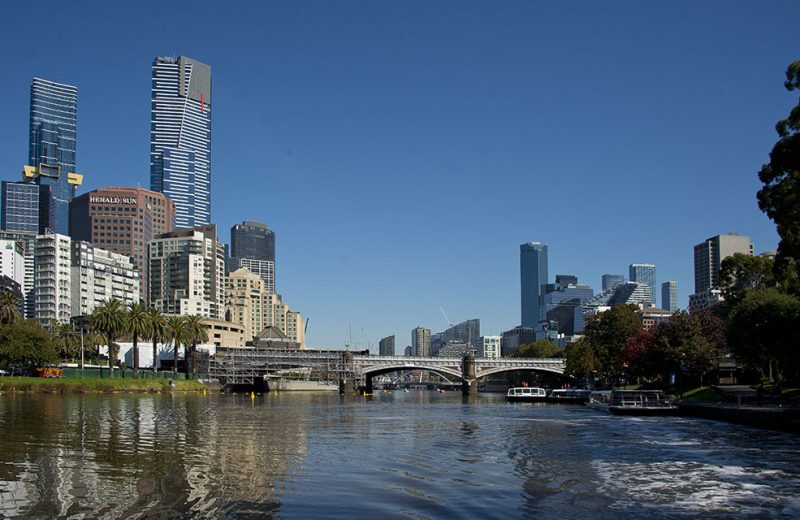
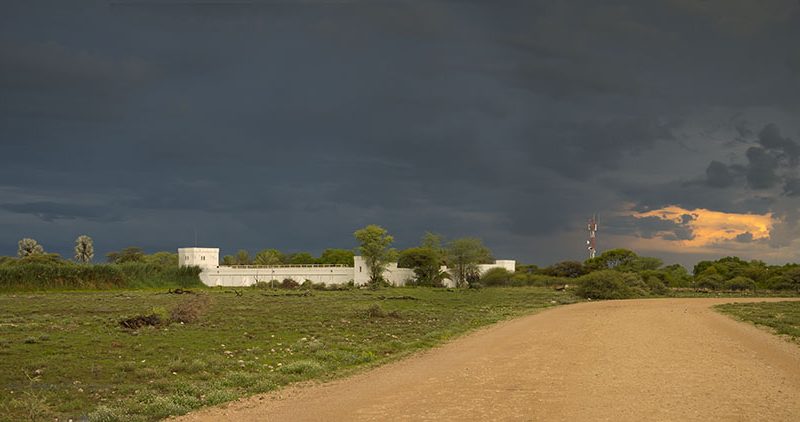
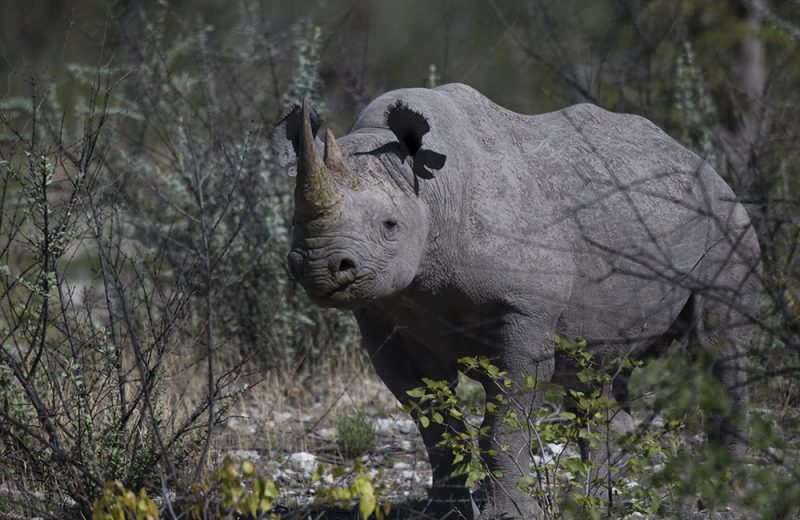
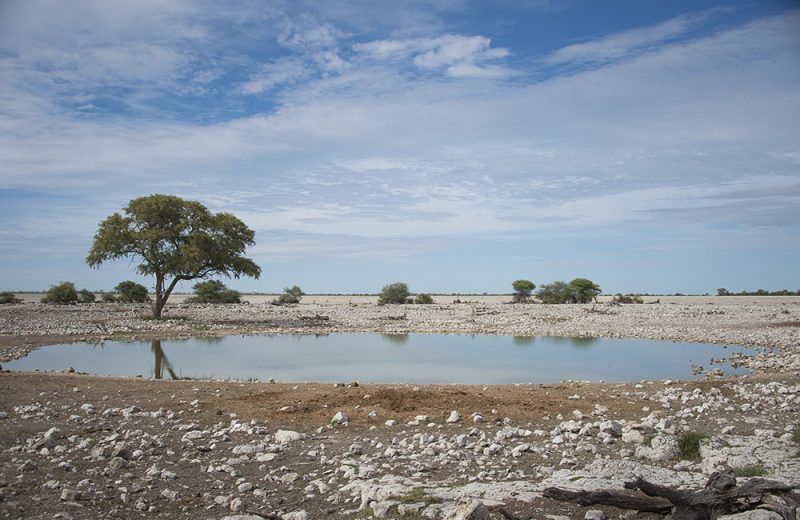
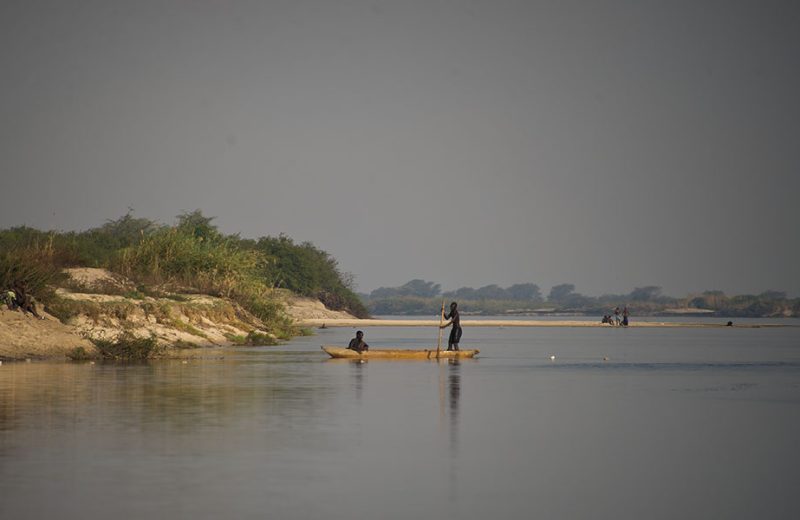
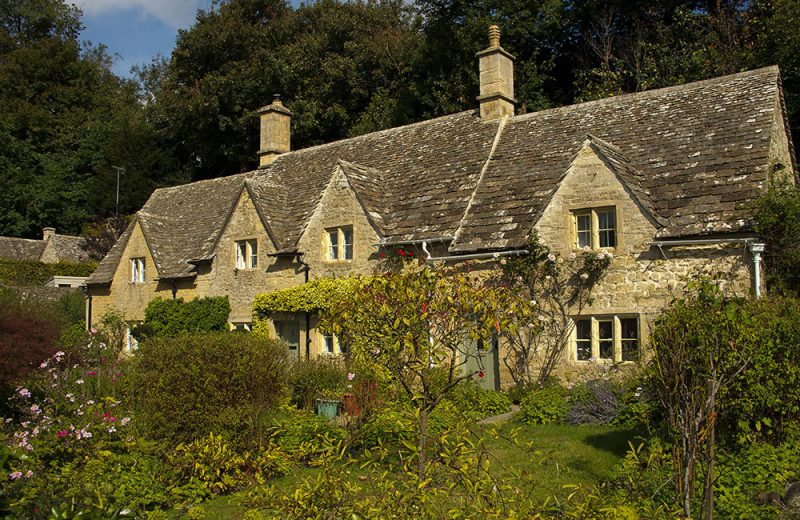
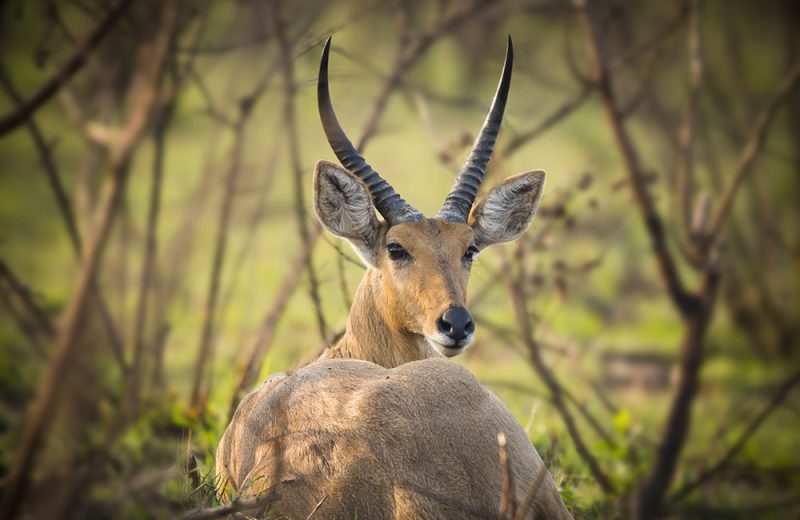
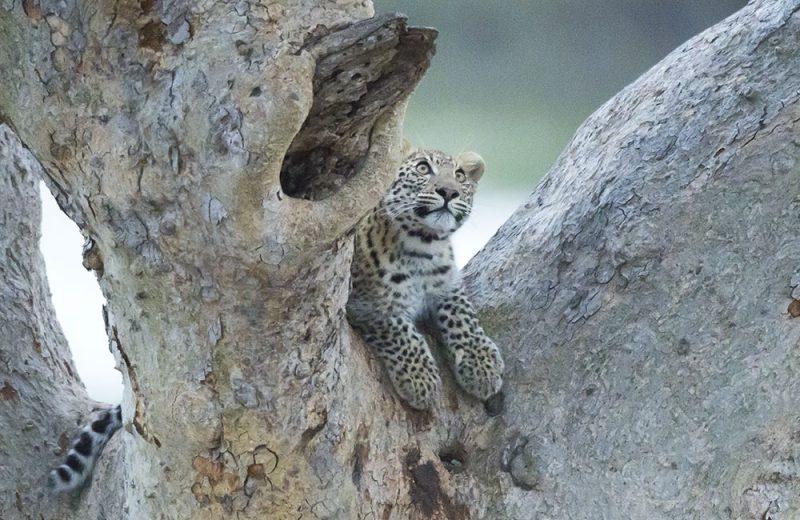
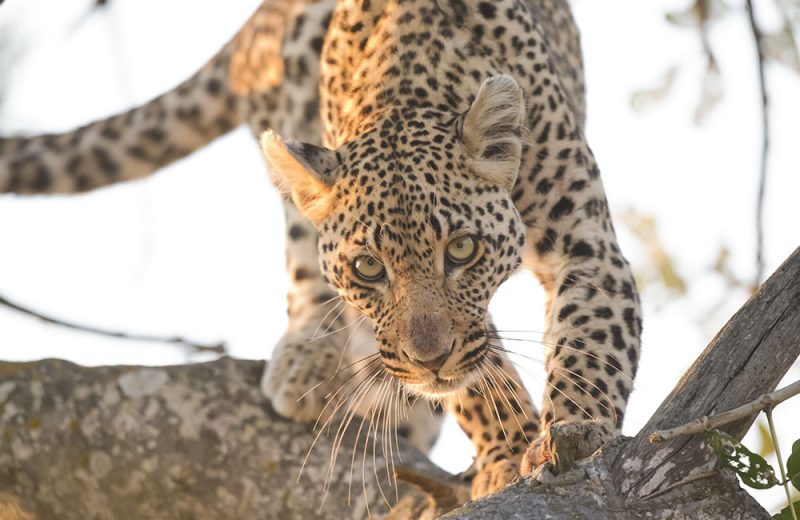
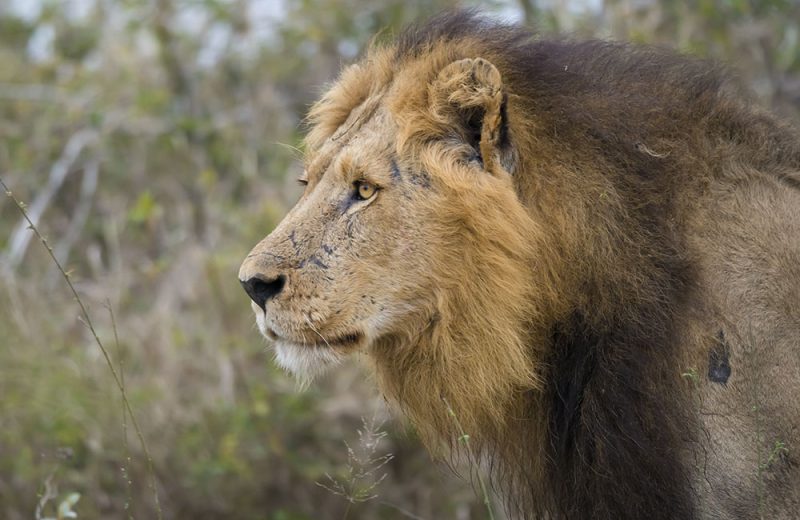
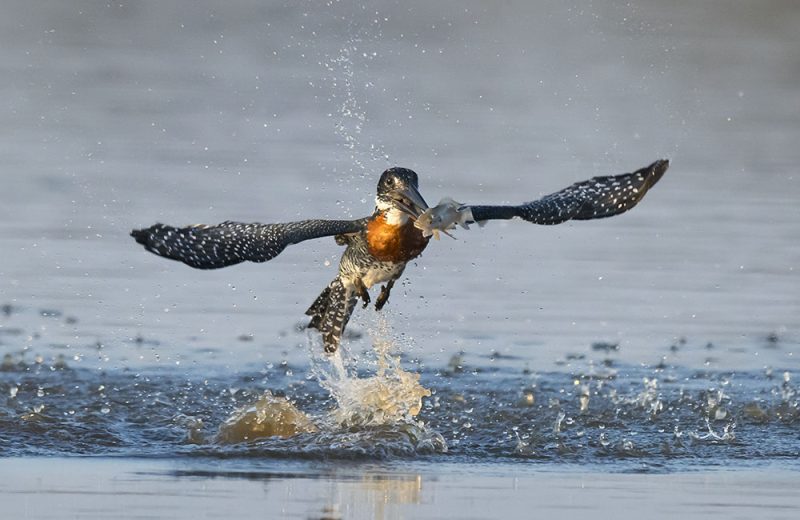
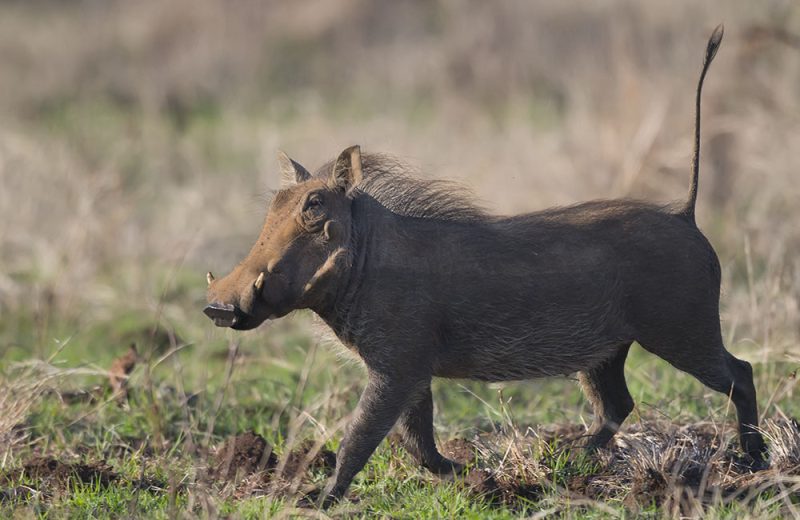
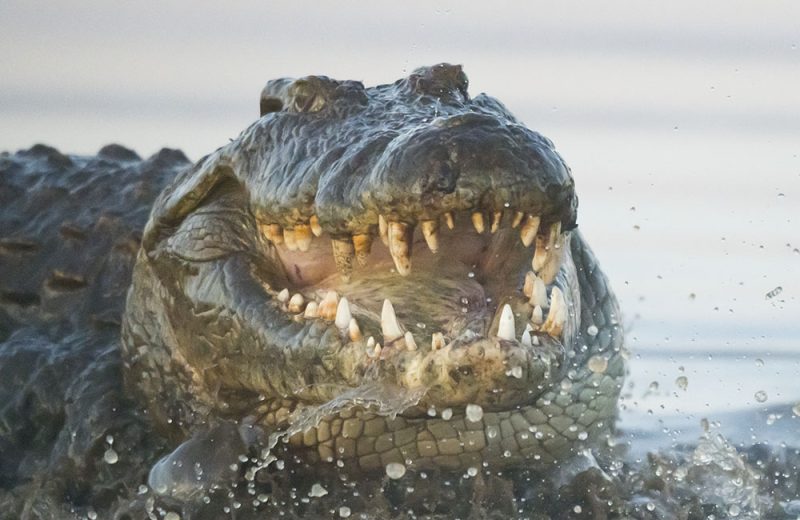
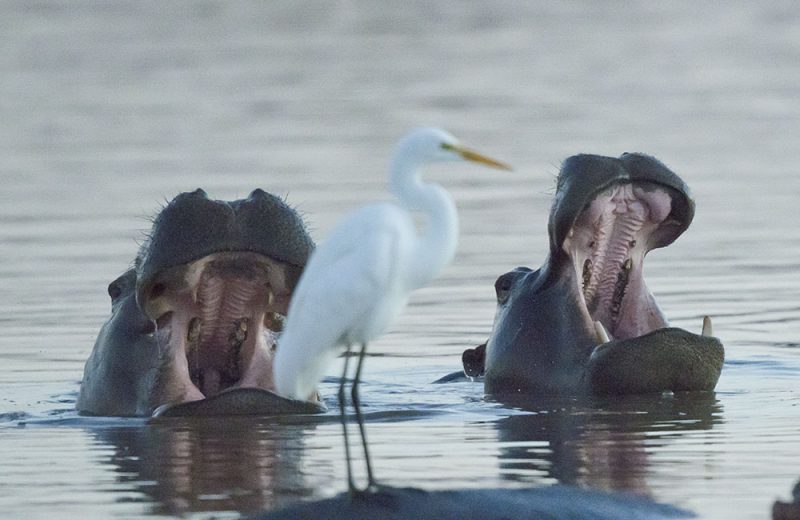
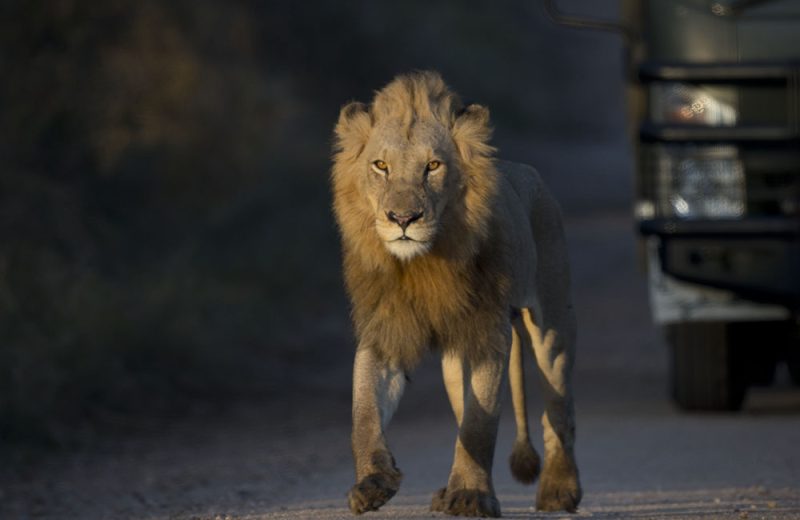
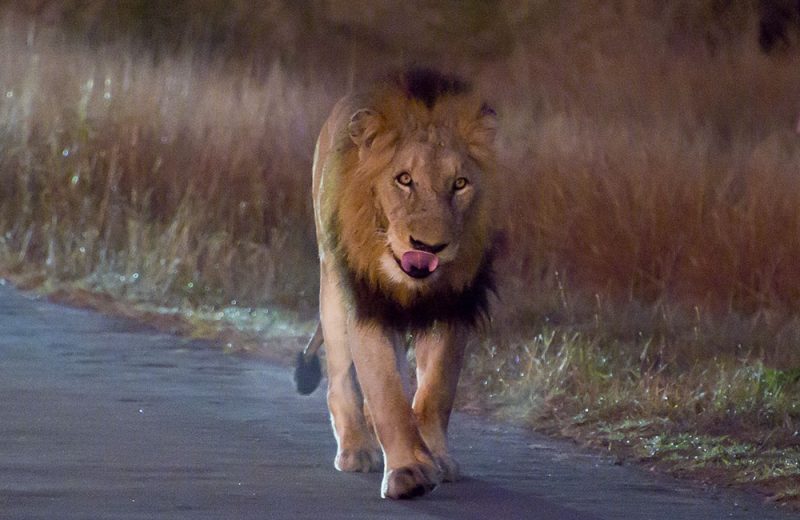
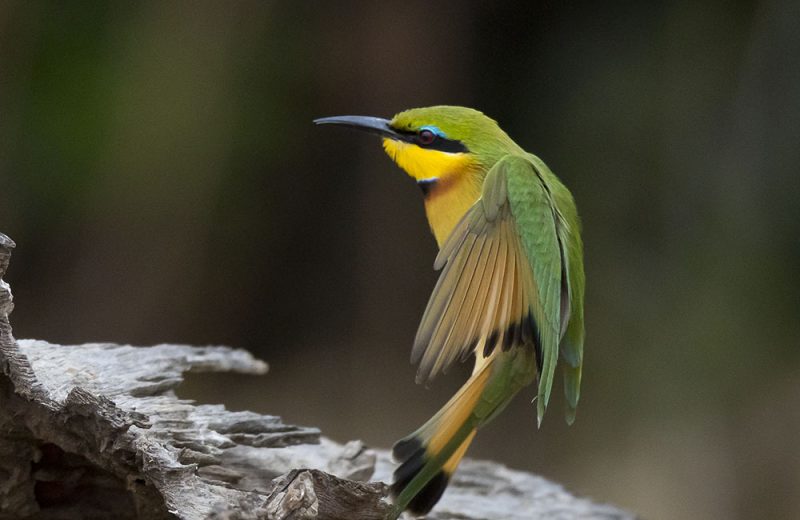
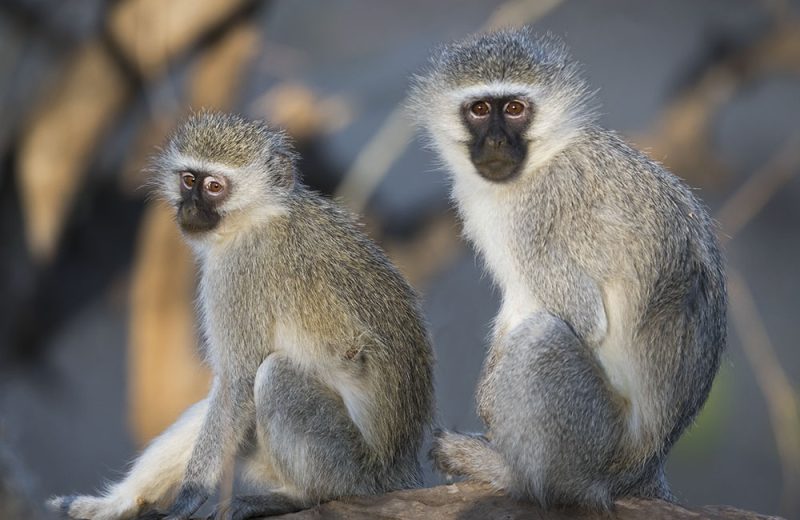
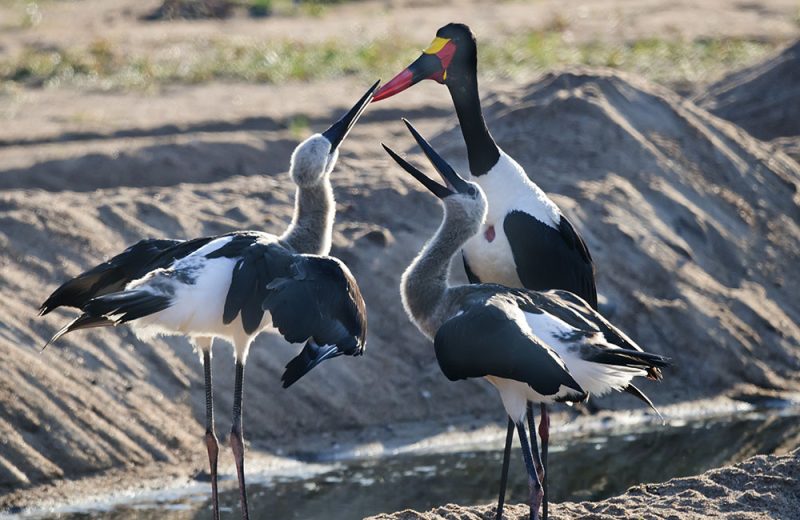
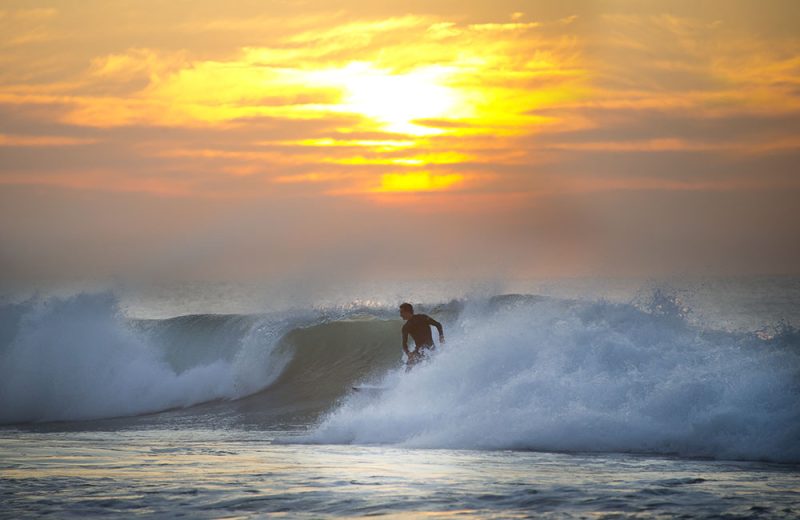
14 Comments
Don Barclay August 23, 2023 at 12:24 am
Many thanks for your very interesting blogs Richard. I did my last Kruger trip in November of last year and being a Kruger “addict” I need a regular fix, many thanks.
!
Richard Grant August 24, 2023 at 1:12 pm
Thanks for your longtime support Don. I am now sitting in Jo’burg and already pining for Kruger. I hope to be back quite soon.
Jenny Cooper August 23, 2023 at 4:41 am
Many thanks, always enjoy your comments and photography. We used to visit the KNP several times a year when we lived in SA, have now been in New Zealand for 27 years, but miss KNP terribly.
Thanks again
Jenny
Richard Grant August 24, 2023 at 1:11 pm
Thanks Jenny. Yes, when visiting beautiful NZ I really missed the abundant wildlife of Africa. Thanks for your support.
Werner August 23, 2023 at 7:44 am
Yet again, you have kept us entertained and somewhat envious. You were truly blessed. So glad we could share this paradise with you for 12 days – thanks again.
Werner & Noleen
Richard Grant August 24, 2023 at 1:09 pm
Thanks Werner. Yes, we must do it again some time.
Pierre August 23, 2023 at 9:17 am
Thank you so much for these wonderful photos and updates. Such incredible photography and wonderful writing.
Richard Grant August 24, 2023 at 1:04 pm
Thanks Pierre. It really motivates me to know that my blog is being of interest to people. Thanks for your support.
Jane Gom August 23, 2023 at 3:00 pm
Many thanks for the excellent photos, especially of the birds (which i know so little about but learning thru your photos.)
Loved your writings & exclusive sightings … (especially the carnivorous hippo!)
Regards
Jane
Richard Grant August 24, 2023 at 1:05 pm
Thanks for your kind words Jane. I can’t wait to get back to Kruger again.
Ann Gibson August 23, 2023 at 10:35 pm
I have loved the descriptions of your outings and sightings each day and have oohed and aahed at your amazing photos. Happily I will be in Kruger next month and have made a mental note of some of the routes you have taken in the hope of rewarding sights and scenery. Thank you for sharing your stories and photos of this beautiful place.
Richard Grant August 24, 2023 at 1:08 pm
Thanks Ann. It is so encouraging to know that my blog gives pleasure to people. I hope to be back in Kruger quite soon.
Cheryl August 24, 2023 at 2:00 pm
Thank you, yet again, for the wonderful Kruger treat.
Dave McGaw August 24, 2023 at 5:28 pm
Many thanks Fred for the descriptions and as usual the wonderful Photos. I am heading for Letaba on the 18 of September and then making my way north to Tsendzi and Punda. All the best for your travels back to the Cape.